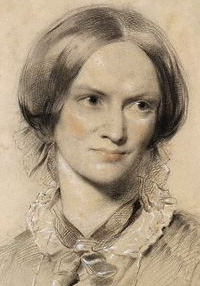Charlotte Brontë’s 1847 novel, Jane Eyre, needs no introduction – you’ve likely read it or at least seen one of the film adaptations.
But oh, Jane Eyre needs to be celebrated, and it just needs to be part of StoryWeb – for isn’t it an all-time great story? The sad and lonely orphan girl turned governess becomes a woman of great compassion and spirit.
Who can forget the orphan Jane cast on the whims of distant relatives who don’t want her, escaping their scorn with a book in the window-seat? Who can forget Jane’s friendship with Helen Burns at Lowood? Though her friend is dying, Jane is steadfast. Who can forget Jane’s first meeting with Mr. Rochester? And who can ever forget their first kiss during the thunderstorm? Who can forget the wedding scene and all that happens after?
For those who haven’t read or seen Jane Eyre, I won’t share my favorite line as it far too easily gives away the novel’s ending. Suffice it to say, it’s an entirely satisfying end to a story of great passion. (And it’s one of the most famous lines in British literature. Guess you’ll have to read the book to get to its best line!)
Curious about the Brontë sisters, their brother, Branwell, and their father, Patrick? Visit The Victorian Web for a short history of the family. To explore in depth, check out the Haworth Village website, which features a full section on the Brontë family. You’ll learn about the gifted sisters who transcended the harshness of the surrounding moors by escaping into rich fantasy worlds. You’ll learn about Branwell’s unfortunate descent into alcoholism and opium addiction. And you’ll learn the amazing story of Charlotte, Emily, and Anne broke into the literary world – by publishing their works under the male pseudonyms of Currer, Ellis, and Acton Bell.
If you’re looking for a good edition of Jane Eyre, try the Norton Critical Edition. Of course, if you can’t wait for your book to arrive, you can read it for free at Project Gutenberg. And if you’re curious about some of the “backstory” to Jane Eyre, you might want to read Jean Rhys’s 1966 novel, Wide Sargasso Sea
, about Rochester and his first wife, Bertha, who hailed from Jamaica. It’s an imaginative “prequel” to Brontë’s classic work.
And finally, if you’d like to know more about the significance of Jane Eyre to 20th-century feminist interpretations of 19th-century women’s literature, you must read Sandra M. Gilbert and Susan Gubar’s 1979 study, The Madwoman in the Attic: The Woman Writer and the Nineteenth-Century Literary Imagination. You’ll discover that Bertha Rochester is not just a classic phantom character straight out of any good Gothic horror story – but that she also symbolizes so much more.
Join me this week on Pinterest as I pin images and resources related to Charlotte Brontë. Take a look around at all my boards – or go straight to “My Favorite Books” board for Charlotte Brontë treats.
Don’t forget to leave a comment on this post! You’ll be entered into a monthly drawing to win a StoryWeb T-shirt if you do one of the following. 1) Subscribe to the weekly StoryWeb email, and leave a comment here (or on any other post!). 2)Subscribe to the StoryWeb podcast in iTunes, and leave a review on iTunes. (If you subscribe on iTunes and leave a review there, shoot me an email at linda@thestoryweb.com to let me know you did so!)
Podcast: Play in new window | Download
Subscribe to StoryWeb in iTunes.Listen to the podcast in Stitcher.
Image Credit: Portrait of Charlotte Brontë by George Richmond, courtesy of London’s National Portrait Gallery (https://commons.wikimedia.org/wiki/File:CBRichmond.png).
